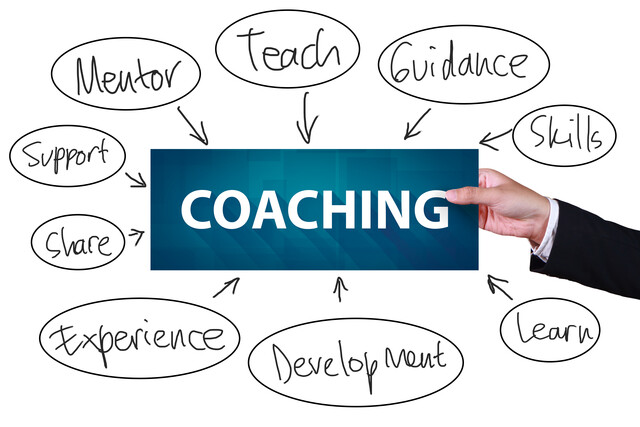Great products are the keys to success. An operations manager's job is to make those great products while implementing strategy, providing competitive advantage, and increasing productivity. To maximize success potential, companies focus on making a few products really well; but since most products have a limited life cycle, it is also imperative to look for new products.
Good operations managers insist on strong communication between customers, products, processes, and suppliers to maintain high quality in existing product lines, while identifying new products and how to get them into the market.
Goods and Services Selection
The most important part of product selection � whether it is a good or a service � is that it helps support competitive advantage. Why do something the organization is not already excelling at in some way? Product decisions are fundamental to strategy and have a ripple effect through the function of operations. Remember the goals of increasing productivity and reducing costs.
Products have a life cycle. Putting a lot of time and resources into a short product life may not be a good decision. The purpose of the operations manager is to design a system that introduces new products successfully. This means efficient production for demand and distribution.
To that end, conducting a Product-by-Value analysis will allow the operations manager to see the items that show the greatest promise. A Product-by-Value analysis is a listing of products in descending order of their individual dollar contribution to the company, as well as the total annual dollar contribution of the product. The report focuses management's attention on product strategies. Is it worth the investment? Raise the price? Push for more market penetration?
Product Development
The importance of new products cannot be overestimated. Leading companies generate most of their profit from products less than five years old, but it is estimated only one out of 250 ideas results in a marketable product. Since some succeed and some fail, the operations manager and organization must be willing to accept risk. The key is accommodating a high volume of product ideas, while staying committed to maintaining current successful activities.
Quality Function Deployment
This is the process that captures a thorough understanding of what the customer wants and putting them into the target design. While Management of Quality, itself, building quality from the start is an important aspect of new product design. It will help determine what the customer wants, and where to deploy quality efforts.
Product Development Teams
Product development teams are teams charged with moving from marketing requirements for a product, to achieving product success. Many companies have a bit of a downward flow for product development. Research and development comes up with the idea, the engineering department designs it, the manufacturing engineering department produces it, and the production department packages and distributes it. This has its advantages and disadvantages.
When a product development team is in charge of a product, there is not so much of a downward flow, as there is a consistent level of communication and process between each area. No one area is negatively affected by its "place in line" and, instead, the team considers each phase concurrently to ensure success.
Such teams can include representatives in each affected area, such as marketing, manufacturing, quality assurance, purchasing, and field service. They can also include vendor representatives. The goal is a highly participative environment that allows and considers all potential contributions.
Defining a Product or Service
Once all of the above yields a product to be introduced, it must be defined. Is it a good or a service? Its function is what determines that � what does it do? If it is a good, then the next step is production.
Good Design
To assure efficient production, the specifications must be documented. This is known as a written specification and they exist for all types of products, from cheese to hamburger patties, from pens to jet planes.
This is normally done on a bill of material. It lists the components, description, and quantity of each required to make the product. The engineering drawing is a component of the bill of material and shows dimensions, materials, and finishes. Even movies have a bill of material; it more commonly known as a script.
Other documents of production include:
1. Assembly drawing: an exploded view of the product
2. Assembly chart: identifies how components connect
3. Route sheet: list of operations necessary to produce or procure a component
4. Work order: how to make an item and to what schedule
Service Design
Designing services is difficult, because of their often unique characteristics. Improvements in productivity are hard in service industries, because the customer interaction is such an integral part of the process. They have input on design specifications (hair styling) and delivery (college curriculum).
Through delayed customization, the consumer's input is as late in the process as possible, giving the operations manager the chance to automate or standardize as much as possible up front to reduce costs or improve efficiency.
By creating a mix-and-match, or modular, delivery, the consumer can still pick what he or she wants to customize in the service, both in design and in delivery.
A third tactic is to find those smaller items in the much larger service that can be automated, such as in the banking industry going to ATMs. It increases customer service, while reducing continued labor costs.
The moment of truth is crucial to service design. This is the moment when the interaction between the service provider and customer results in customer satisfaction. It can be as simple as a smile. Finding those moments and developing them into the process will help ensure a service's success.
Documents for service design are drastically different than in good design. They can consist of:
1. Job instructions: a set of detailed instructions of how to do a task (most common)
2. Script (as in telemarketing)
A large part of an organization's sales dollars is spent in procuring those items necessary to produce their products or services. Significant funds are spent on production and distribution. Relationships with companies that supply those items are long term and increasingly integrated into a company's processes and decision making. Supply chain management is the integration of those activities that procure materials and services, transform them into intermediate goods and final products, and deliver them to customers.
Strategic Importance of the Supply Chain
There are many activities to manage in supply chain management. They touch every aspect of an organization's production.
1. Transportation vendors
2. Credit and cash vendors
3. Suppliers
4. Distributors
5. Accounts payable
6. Accounts receivable
7. Warehousing
8. Inventory
9. Order fulfillment
10. Sharing information about customers, forecasting, and production
Long-lasting relationships with suppliers who help the operations manager maximize value to the customer can be a competitive advantage.
Supply Chain Economics
The supply chain is the most costly activity in a firm's strategy. That is why it should receive a lot of attention from an operations manager. This is a major opportunity to reduce costs and increase profit margins.
Make-or-buy decision making is an important part of supply chain economics. Is it more economical to make components, or buy components? The make-or-buy decision is the choice between producing a component or service in-house, and purchasing it from an outside source. It is not just based on dollar value, however. The part necessary may be protected by a patent, making purchasing the only option. In another instance, quality may be of utmost importance, and while the operations manager may be able to obtain it at a cheaper price than manufacturing it, it is not of the desired quality. So it remains an in-house function.
Another decision point is outsourcing. Outsourcing is transferring a firm's activities that have traditionally been internal, to external suppliers. Sometimes there is more value to allowing an external expert to perform a task, leaving the organization to focus on its core competencies and critical success factors.
Ethics
Supply chain management is a vast activity fraught with challenges to ethical decision making. Sales personnel are anxious to sell, and there can be a fine line between a bribe and a token of friendship or appreciation. The Institute of Supply Management has developed principles and standards for employees and businesses to use as guidelines for ethical behavior. They are headed by three main principles:
1. Be loyal to your organization.
2. Deal justly with others.
3. Have faith in your profession.
Supply Chain Strategies
Supply chain strategies break down into five types. As part of a firm's long-term strategy, they need to decide which one to pursue, or to what extent to pursue a combination. Global organizations frequently use more than one, depending on which part of the world they are conducting business.
1. Many suppliers. This puts the order out to suppliers, who then bid on supplying to the organization. This results in fierce competition with the job going to the lowest bidder.
2. Few suppliers. This focuses on building long-term relationships with a few dedicated suppliers. This creates value in familiarity � lower production costs and transaction costs due to a low learning curve. It can also result in just-in-time delivery systems, lowering inventory cost.
3. Vertical integration. This is developing the ability to produce goods or services previously purchased (forward integration) or actually buying a supplier or a distributor (backward integration). If a firm has the right resources, this can result in cost reduction, improved quality and better distribution.
4. Virtual companies. Managing this supply chain is demanding and dynamic as it depends on many suppliers providing services on demand, such as payroll, human resources, distribution and more. It can result in very lean performance yet requires a lot of ongoing attention.
5. Kieretsu Networks . Found primarily in Japan, this is where a business joins a coalition of other businesses to obtain efficiencies, from long term relationships and shared goals. Every entity acts as a partner with the others all throughout the supply chain.
Vendors
Vendor selection is an enormous task with many factors to consider, including price, quality, availability and strategic fit. Every firm should have procurement policies in place. There are three steps to vendor selection.
1. Vendor evaluation. This is finding possible suppliers and determining whether or not they would be a good supplier. Factors to evaluate include financial strength, management, technical ability, research, and potential for a long-term relationship.
2. Vendor development. Once a vendor has been selected, this is the process of integrating the vendor into the organization's system. It could include training, engineering assistance, production help, and information transfers.
3. Negotiations. Once a vendor is accepted, negotiations must be conducted to finalize expectations. Besides the issue of cost, expectations of quality, delivery and payment are often also discussed. The goal is to establish a degree of mutual trust and faith in each other.
Logistics
The logistics system works in conjunction with procurement, as it deals with shipping, warehousing and inventory. The purpose of logistics management is efficient material movement, acquisition, and storage activities. Transportation costs can be as much as 25 percent of the cost of a product. This requires constant evaluation of the best shipping methods, either in-house or through logistics specialists. Distribution systems include truck, rail, air, water, and pipelines. Evaluation of the best method to ship, when to ship, and how long to store is critical to successful logistics management.
Measuring Performance
Supply chain managers use metrics to evaluate performance of the supply chain and how well assets are being utilized. Benchmark firms lead the way in categories of supply chain performance. By knowing the benchmarks, operations managers can consider them in the design of their operations to emulate that success, while reducing costs and increasing productivity.
Assets committed inventory increase cost. The goal is have as many assets as needed for production or products for demand, while limiting warehousing and shipping time. The following metrics can be used to judge performance in this area:
1. Percent invested in inventory = (Total inventory investment/Total assets) x 10
2. Inventory turnover = Cost of goods sold/Inventory investment
3. Weeks of supply = Inventory investment/(Annual cost of goods sold/52 weeks)























